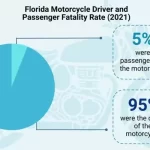In light of an increasing truck driver shortage, in December 2021, Arizona’s Department of Transportation took several steps to make it easier for commercial drivers to receive and retain their licenses, such as extending the validity of a commercial learner’s permit from six months to a year.
These changes are understandable, given the impact truck drivers have on the economy. Truck drivers drive 140 billion miles each year, while a single long-distance truck may travel as many as 100,000 miles in that time. And trucks are an essential part of our supply chain, carrying 11 billion tons of merchandise. Semi-trucks deliver a whopping 68% of all U.S. goods.
But there are also reasons to be concerned about the changes in rules in commercial trucking. In 2020, 107,000 large trucks were involved in an injury accident, while 4,842 large trucks were involved in a fatal crash. That’s a decrease from 2019 (possibly because of the COVID pandemic’s impact on travel), but it’s an increase of 33% since 2011.
Since large truck accidents can have devastating consequences, it’s useful to understand the causes of truck accidents and why truck crash litigation can be surprisingly complex.
Understanding the Multiple Factors/Events That Cause an Accidents
There’s a commonly repeated myth that 94% of car accidents are the result of “human error.” Because this helps us believe that there is one person to blame for most accidents. However, it isn’t true, and experts say that it distorts how we understand and investigate accidents.
When it comes to the 94% statistic, The Atlantic demonstrated how misleading it is. As The Atlantic author explained,
- It’s a foggy day, and the driver of an SUV is traveling … at the posted speed limit of 40 miles per hour. The limit then drops to 25 as the road approaches a town—but the road’s lanes do not narrow … and the lone sign announcing the lower speed limit is partially obstructed. Oblivious to the change, the driver keeps traveling at 40. As he enters the town, a pedestrian crosses the road at an intersection without a stoplight. The driver strikes the pedestrian.
Human error only comes in the last two steps, the pedestrian’s crossing the road and the driver’s striking them. And if we focus on those errors, we overlook the other circumstances that led to the accident—the weather, the road conditions, and so on.
As a seminal study by the National Highway Traffic Safety Administration (NHTSA) explained, there is no single cause for any crash. Instead, there are several contributing factors—related events that all lead up to it. Then there’s a “critical event,” often the last thing before the crash, that most directly caused the accident.
Driver’s Factors that Increase Likelihood of a Truck Accident
There are features in a driver’s personal history that predict their likelihood of crashing, such as someone’s driving record. Commercial drivers who have moving violations within the last three years have an increased risk of crashing, while younger (age 20-33), less experienced truck drivers are more likely to get into an accident.
Interestingly, truck drivers over the age of 52 who have untreated lung and chest conditions are almost four times more likely to get into an accident than their same-aged peers without those medical conditions. But those treated for those conditions are no more likely to get into an accident. The meaning of this is still unclear. It could be that their untreated medical conditions impact their driving ability. But it may also be that the same reasons they don’t seek medical attention lead them to be poorer (i.e., riskier) drivers.
While drugs and alcohol impair anyone’s ability to operate a vehicle, alcohol is present much less frequently in a commercial driver’s accident than for those driving passenger vehicles or motorcycles.
Instead, sleep deprivation and fatigue are among the biggest contributors to commercial drivers’ accidents. Commercial drivers are twice as likely to have an accident after driving for more than eight consecutive hours.
To address this, truck drivers must keep logbooks on their hours of service. They aren’t allowed to drive more than 11 hours. They must rest for 10 hours between long drives, and they need at least a half-hour break after eight hours. If they violate any of these requirements, they’re more likely to crash.
Driver inattention is another huge risk. According to one report, “when driving a large commercial truck, distracted driving can be deadly. Recent studies have found that distracted truck driving was a factor in 71% of all truck driving accidents and 6% of all fatal crashes.”
It’s Not Always the Driver: Other Factors Are Important, Too
Other factors affect the likelihood of a truck accident. Defective equipment is a common contributor to accidents: One North Carolina research team found that any vehicle defect increased the risk of an accident by 200%.
Of the trucks the team had studied, 42% of those involved in a crash had brake defects. And if the brake defects were severe, that tripled the risk of an accident.
The truck design itself can exacerbate accident severity. If a truck is high enough off the ground, then a passenger vehicle can be involved in an “underride crash,” where the car goes partially or completely underneath the truck or trailer. This type of crash increases the risk of the passengers’ severe injury or death. Historically, half of the fatalities in accidents that include a large truck and a passenger vehicle are from these underride crashes.
Litigation of Truck Accident Cases
Because both critical events and contributing factors can lead to an accident, truck accident litigation tends to be highly complicated and fact-specific.
The research underscores the importance of searching more broadly for those responsible for the accident (e.g., not limiting yourself to another driver). A plaintiff should consider the roles that the truck driver and their employer each played in the accident. They should review the condition of all the drivers, the truck, and its cargo. Depending on the findings, the truck manufacturer or maintenance providers might be liable for the accident.
Analysis of the crash should include all the contributing factors, such as the road conditions and weather. And it should include a review of all of the drivers’ actions and their driving histories.
As complex as these cases can be, we have just scratched the surface of truck accident litigation. That’s why if you have any questions about a truck accident, you should contact our office (by phone at: 602-548-3400) for a confidential consultation with one of our attorneys. Don’t wait. Call today.
Scott David Stewart is an attorney in Phoenix, Arizona. Mr. Stewart’s personal injury practice division focuses on dog bite, motorcycle accidents, truck accidents, auto accidents and general injury claims.




